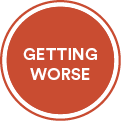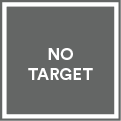- Healthy Human Population
- Local Foods
- Indicator
- Dungeness crab catch for personal use
- Vital Sign Indicator
- Pounds (lbs)
- /
-


No targets are currently set for this indicator.
-
Donald Velasquez
- Contributing Partners
- Last Updated
- 8/1/2023 2:41:22 PM
Pounds of Puget Sound Dungeness crab harvested for personal use each year by marine basin and across Puget Sound. Each marine basin contains one or more Puget Sound Marine Areas (MA): Strait of Juan de Fuca (MA 4, 5, and 6), North Puget Sound (MA 7), Whidbey (MA 8-1 and 8-2), Hood Canal (MA 9 and 12), and South Central Puget Sound (MA 10, 11, and 13).
Crabbing is one of Puget Sound’s most popular noncommercial fisheries. Every Dungeness crab fisher is responsible for knowing and following the fishing rules, including complying with catch record card (CRC) requirements. Fishery managers rely on catch information provided by fishers to manage the Puget Sound Dungeness crab fishery and plan future seasons.
The health and quality of life of Puget Sound residents is partially dependent on their ability to collect local resources for ceremonial, subsistence and recreation foods. The act of collecting, preparing and sharing such foods maintains cultural knowledge and practices and often builds social relationships. Shellfish harvest is very important for tribal subsistence and ceremonial purposes. However, there are no consistent metrics easily compiled across tribes. Therefore, the indicator data will pertain to non-tribal catch only, with a recognition of the importance of this shellfish resource for the tribes.
- Crabbing is one of Puget Sound’s most popular noncommercial fisheries. Each year over 200,000 people purchase a Puget Sound Dungeness crab endorsement card, which is required to harvest crab for personal use.
- Between 2007 and 2022, harvest for personal use peaked in 2015. That year crabbers caught nearly 2.7 million pounds of Dungeness crab across Puget Sound. Harvest has since declined and in 2022 crabbers caught approximately 1.5 million pounds.
- Most of the annual harvest comes from two marine basins: North Puget Sound which includes Marine Area 7 (covering the San Juan Islands and Bellingham Bay) and the Whidbey Basin which includes Marine Areas 8-1 and 8-2 (covering east of Whidbey Island including Skagit Bay and Port Susan).
- Since 2015 an increasing number of harvest closures have been required within South-Central Puget Sound and Hood Canal. As a result, total harvest has declined, and the progress of this indicator is determined to be “Getting Worse”.
- In 2018 Washington Department of Fish and Wildlife and Tribal Co-Managers closed Marine Areas 11 and 13 in the South-Central Puget Sound Basin to any harvest. The closures were in response to continued declines in the Dungeness crab population. Marine Area 11 has reopened to harvest on a limited basis since 2020. Limited harvest quotas have been in place in Marine Area 10 (Seattle-Bremerton area) from 2018 through 2022. Marine Area 12 (Hood Canal) – South of Ayock Point has been closed since 2019.
- See a map showing the estimated annual Dungeness crab catch for the 11 Puget Sound Marine Areas.
- Monitoring Program
Washington Department of Fish and Wildlife recreational shellfish program
- Data Source
Washington Department of Fish and Wildlife Puget Sound Dungeness Crab Catch Record Card
State law requires people harvesting Dungeness crab for personal use in Puget Sound to have a Dungeness crab endorsement and a current catch record card (CRC). Harvesters record the number of Dungeness crab kept per Marine Area per day on their CRC and then return the cards to the Washington Department of Fish and Wildlife (WDFW) either via mail or reporting online. These harvest data constitute a “census”, or known catch, and assume all catches were reported correctly. A weight conversion of 1.8 pounds per crab is used to convert numbers of crab to pounds harvested. Cards with zero catch are included in the average harvest estimate; otherwise the numbers would be inflated.
Catch is also estimated for the proportion of CRCs that are issued, but not returned. Phone surveys have shown that non-respondents catch fewer crabs per card than respondents. Therefore, a non-response bias correction factor is calculated and applied to the reported catch based on the proportion of issued cards to reported cards.
Catch is reported for Puget Sound Marine Areas 4 through 13. Each summer and winter non-tribal, noncommercial crab catch totals are generated from three data sources: returned CRCs, internet reported CRCs, and non-reported CRCs corrected for bias. The WDFW shellfish team collects data in February so that State and Tribal co-managers can meet throughout the spring to plan for the upcoming Puget Sound crabbing season. For more information on the fishery see WDFW Shellfishing Regulations.
- Critical Definitions
Each year between 200,000 and 250,000 people purchase a Puget Sound Dungeness crab endorsement card, signaling their interest to harvest crab in Puget Sound. While the total pounds harvested has gone up and down over the years, the number of endorsement cards issued has stayed fairly stable.
Dungeness crab are harvested throughout Puget Sound, however, crab are more abundant in North Puget Sound compared to South Puget Sound. The majority of the harvest for personal use occurs in the waters around the San Juan Islands and east of Whidbey Island (see map of harvest by Marine Area).
WDFW and Tribal Co-Managers monitor Dungeness crab populations and harvest data in order to set recreational crabbing seasons. Since the fishery started, no areas have been closed for an entire season until 2018 when Marine Areas 11 (Tacoma-Vashon Island) and 13 (South Puget Sound) were closed in response to continued declines in the Dungeness crab population since 2013. The closure is intended to protect crab from harvest and allow populations time to recover. However, WDFW reports that harvest pressure over the past decade is not the primary factor in the decline of Dungeness crab, and that there are likely other environmental factors limiting their production. Marine Area 11 was reopened to summer harvest on a limited basis in 2020, 2021, and 2022. Limited harvest quotas have been in place in Marine Area 10 (Seattle-Bremerton area) from 2018 through 2022. Marine Area 12 (Hood Canal) – South of Ayock Point has been closed since 2019.
State and Tribal co-managers work together to plan crab seasons. Dungeness crab harvest for personal use accounts for, on average, 20 percent of the state’s total harvest. The state commercial crab fishery accounts for another 30 percent, and the tribal fishery comprises the remaining half of the total harvest. The 1994 federal court ruling known as the Rafeedie Decision, confirmed that the tribes had reserved harvest rights to half of the harvestable shellfish on most Washington beaches.
Information on commercial crabbing in Washington is available through WDFW Commercial Dungeness crab fishery. Information on tribal fishing is available through the Northwest Indian Fisheries Commission.
-
Fishery managers rely on catch information provided by fishers to manage the Puget Sound Dungeness crab fishery and plan future seasons. State biologists also conduct test fishing to measure the average density of adult crab in different areas of Puget Sound. Managers use this information to track changes in crab populations and ensure that harvest levels remain sustainable.
Recreational Dungeness crab harvest may be limited or prohibited in areas due to low crab abundance; the recent closures in South Puget Sound for example. According to an article from WDFW on the management of Dungeness crab populations, harvest pressure over the past decade is not the primary factor in areas that have observed declines in Dungeness crab abundance. Rather, declines are thought to be linked to changing ocean conditions which may limit the survival of young Dungeness to adulthood. Some factors that may impact growth and survival include:
- Warming surface waters
- Ocean acidification
- Pollutant levels
- Hypoxia (insufficient oxygen)
Additionally, Dethier (2006) describes how all shellfish in Puget Sound are affected by human alterations of key ecosystem processes (such as sediment supply) and habitat characteristics. Dungeness crab are frequently found in eelgrass beds which are sensitive to stressors such as pollution, sediment inputs and physical damage.
The Puget Sound Crab Fishery Policy provides guidance for state-managed fisheries of Dungeness crab in order to “promote a healthy and sustainable population of Dungeness crab in Puget Sound and work cooperatively with the Tribal Co-Managers in structuring management measures to ensure a healthy and sustainable resource and achieves a fair sharing of the harvestable resource”. The policy was revised in 2010 to expand fishing opportunities for recreational crabbers by adding an extra day a week in the summer harvesting schedule.
The Puget Sound Crab Fishery Policy guidelines focus on conservation and public education to increase compliance with fishing regulations. WDFW provides easily accessible, up to date information to the public on regulations and guidance for crabbing in Puget Sound through their website. The agency has also produced a series of educational videos through the WDFW YouTube channel including a video showcasing the recreational Dungeness crab fishery in Puget Sound.
Reference:
Dethier, M. 2006. Native Shellfish in Nearshore Ecosystems of Washington State. Puget Sound Nearshore Partnership Report No. 2006-04. Published by Seattle District, U.S. Army Corps of Engineers, Seattle, Washington. Available at www.pugetsoundnearshore.org
No datasets uploaded.
- Reporting Instructions
| Name | |
|---|---|
| Harvest by Marine Basin |
Strait of Juan de Fuca, North Puget Sound, Whidbey, Hood Canal, South Central Puget Sound
|
| Total Harvest |
Puget Sound
|